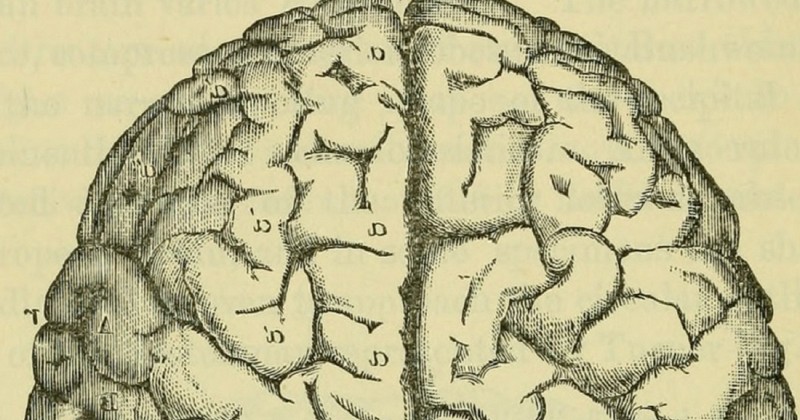Human brain: characteristics, structures and associated pathologies.

The human brain has a number of characteristics that distinguish it from those of other species.
For many years, psychobiology has been trying to establish the Biological basis of human behavior.
Today we know that the nervous system of any person is a control and integration mechanism that regulates and supervises all the activities performed by the organism. It is divided into two: the central nervous system (CNS) and the peripheral nervous system.
In turn, the CNS is divided into two more substructures: the encephalon and the spinal cord. Within the encephalon we find three substructures: cerebrum, cerebellum and brainstem. Today we will talk about one of them, a very important structure that differentiates us from other species: the human brain..
Human brain and cerebral cortex
The human brain is a complex a complex organ formed by the cortex (lobes) and by different subcortical structures (white matter and gray nuclei). (white matter and gray nuclei). The cortex would be the surface of the brain, which is divided into two: left hemisphere and right hemisphere.
An adult brain weighs approximately 1,500 grams. Although its weight represents only 2% of the body weight, it consumes the same amount of energy as the skeletal musculature at rest.
As for the two hemispheres that divide it, it is known that the right hemisphere is more related to visuoperception and a more global perception; the left hemisphere would be more related to language, and would be more analytical. However, this distinction is relative, and in general, with some exceptions, both hemispheres of the human brain do everything.
The cerebral cortex is responsible for learning, thinking, and decision-making.It sends signals to other parts of the brain to allow us to move and communicate. It also uses information from the senses and allows us to interact with and adapt to the world.
The cortex is made up of six cellular layers that organize the afferents (receiving information) and efferents (sending information) of its neurons (approximately 60,000 million).
Its organization into cerebral lobes
The human brain is made up of 5 lobes (parts of the cerebral cortex with specific functions):
- Occipital lobe: related to vision.
- Parietal lobe: related to somatosensory interpretation.
- Temporal lobe: related to hearing and memory.
- Frontal lobe: related to higher mental processes, verbal communication and voluntary motor control.
- Insula: related to memory and sensory (pain) and visceral integration.
Lesions and associated pathologies
The lesion of the different cerebral lobes causes various pathological consequences, studied by neurology and neuropsychology.. Let us see the most important ones.
Lesion in the occipital lobe
Visual agnosias (not recognizing objects or people by sight), Anton's Syndrome and Bálint's Syndrome.
Parietal lobe lesions
Constructional apraxias, Gerstmann's syndrome, asterognosia (inability to recognize objects by touch).
Temporal lobe lesion
Hearing and comprehension impairment, Klüver-Bucy syndrome.
Frontal lobe lesion
Impairment of executive functions (disjective syndrome), movement disorders, pseudodepression and pseudopsychopathy.
Ontogenetic development: divisions and structures
The human brain is divided into several structures that arise from three main divisions during gestation and development of the nervous system.
Prosencephalon (forebrain, towards the face)
Formed by the telencephalon and diencephalon.. In turn, the telencephalon consists of the cerebral cortex, basal ganglia and limbic system ("the center of emotions"); and the diencephalon consists of the thalamus, hypothalamus, subthalamus, epithalamus, retina and optic nerves.
Midbrain (midbrain)
Formed by a subdivision with the same name, midbrain. This in turn is formed by the tectum, the tegmentum and the substantia nigra.
Rhombencephalon (posterior encephalon, to the back)
Formed by the metencephalon and the myelencephalon. The metencephalon is formed by the cerebellum and the pons, and the myelencephalon by the medulla oblongata..
Differences and similarities between humans and animals
The first difference we find between the human brain and the primate brain, for example, is its size (larger in humans). It is known that the greater the evolutionary proximity of the species (with respect to humans), the larger the size of the latter. In addition, the cerebral cortex of the human brain is the cerebral cortex of the human brain is larger and rougher than that of other animals of the same size. than that of other animals of the same size.
On the other hand, the human brain has many more cells than those of the brains of other primates, and they also show more interconnections, i.e., they have greater processing capacity.
In terms of similarities, both in animals and humans, it is known that within the aforementioned limbic system there is a subcortical structure, the amygdala, which has been consistently related to emotions and aggressive behaviors.
In addition, recent studies reveal that in both animals and humans aggressive behavior is frequently associated with decreased activity of serotonergic neurons.
Bibliographical references:
- Netter, F. (1989). Nervous system. Anatomy and physiology. Barcelona: Salvat.
- Carlson, N.R. (2005). Fisiología de la conducta. Madrid: Pearson Educación.
- Parra, L., García, A.A., Ortiz, S., Pérez, D., Nájera, J., Basurto, N.E., Espinoza, V. and Rivas, I. (2009). Brain anatomical differences that imply functional differences. Rev Fac Med UNAM, 52(4), 177-181.